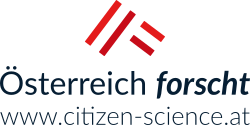
Camaliot
The CAMALIOT (Application of Machine Learning Technology for GNSS IoT Data Fusion) project
The CAMALIOT project integrates data from the Internet of Things (IoT), including smartphones, and traditional Global Navigation Satellite System (GNSS) data sources to leverage Big Data, Data Fusion and Machine Learning technologies to to demonstrate how these data can be used in different scientific applications.
Taking advantage of dual frequency chipsets now available in some Android mobile phones, the CAMALIOT Android app logs data from all available satellites. The purpose of the mobile app is to collect as much raw GNSS data as possible from as many locations around the world using crowdsourcing. The data are being ingested into machine learning algorithms for determination of tropospheric parameters that support weather forecasts on Earth and for the monitoring of space weather, important for satellite operations and communication. More information about the scientific results can be found on the www.camaliot.org website. A paper describing the app and the data collection campaigns can be found here in the International Journal of Digital Earth.
Although the CAMALIOT project funding is now finished, we are still collecting data through the CAMALIOT mobile app for the acquisition of raw, crowdsourced GNSS data to support ongoing scientific research.
The project has three main partners: (i) the European Space Agency, who funded the project and provided scientific support; (ii) ETH Zurich, who led the project and have developed the machine learning models for weather prediction; and (iii) the International Institute for Applied Systems Analysis (IIASA), who developed the CAMALIOT crowdsourcing app and have led the data collection as outlined on the project's website.
This project fulfils version 1.1 of the quality criteria for citizen science projects on Österreich forscht.
- weather

